Here’s how the expedition started. We were flown in a bright-yellow chopper to the Boland Mountains on the outskirts of Cape Town, South Africa. Camping and abseiling gear: Check. Food supply: Check. The campsite was surveyed, coordinates were jotted and strict safety instructions were given to me and the team.
I, the photographer, would be spending three days on the mountain documenting the work of the high-elevation team, a group of trained abseilers who were tasked to scale the high cliffs to cut down water-thirsty invasive pine trees.
“Safety first. You’re in the mountains where the weather can change within moments,” projected Ivan Groenhof, team mentor, over the wind. Though none of the team members expressed any emotion, I sensed some jittery nerves. After all, the team was scheduled to be camping out here for 12 days straight, and for some this was their first camping experience.
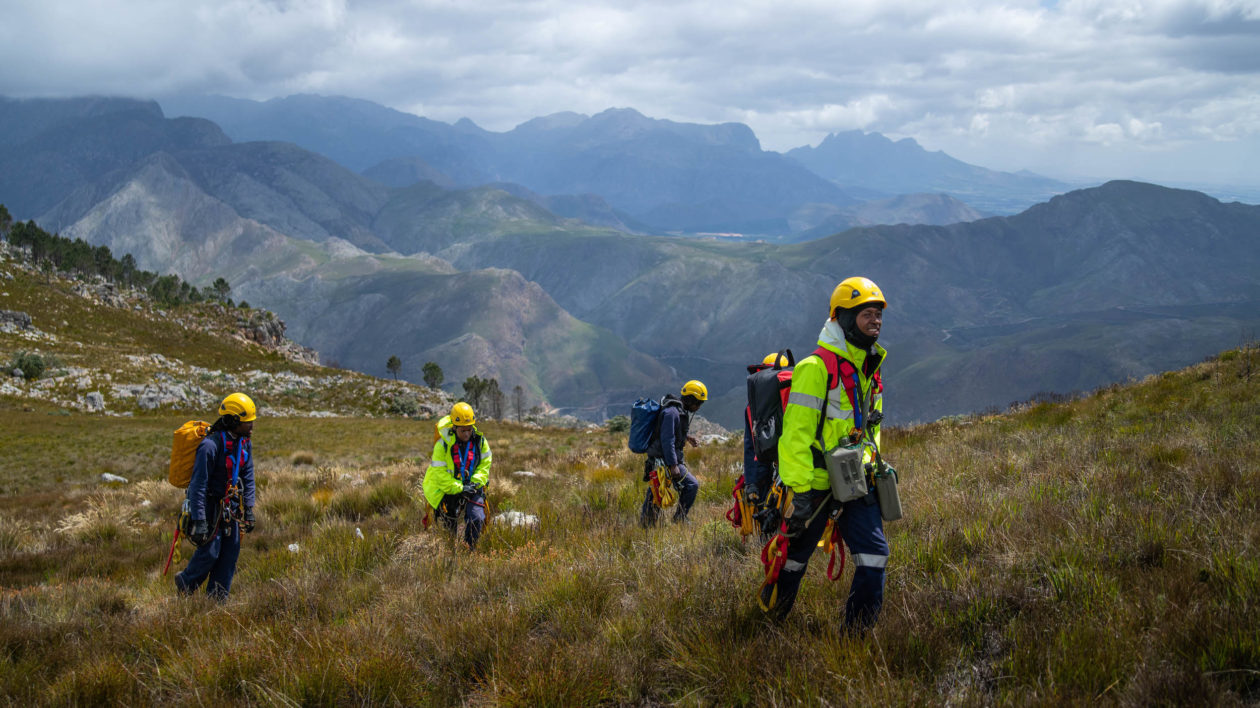
Much of the Greater Cape Town watershed is lined with invasive pine trees that soak up over 54 billion liters of water a year preventing water drainage into the Theewaterskloof dam that provides much of the water supply for Cape Town’s 4 million residents, neighboring municipalities and agriculture.
The larger Cape floral region is one of the most botanically diverse areas on earth — it contains more than 20 percent of Africa’s plant life, and more than 70 percent of the plants found here are found nowhere else on Earth. Invasive pines can outcompete the ecologically critical fynbos plants and, as their seeds get blown by the wind, they can easily start growing in remote areas like the Boland Mountains.
These high-angle rope technicians were hired and trained by the Greater Cape Town Water Fund as part of a long-term solution to securing water in this region while protecting its fynbos plant life.
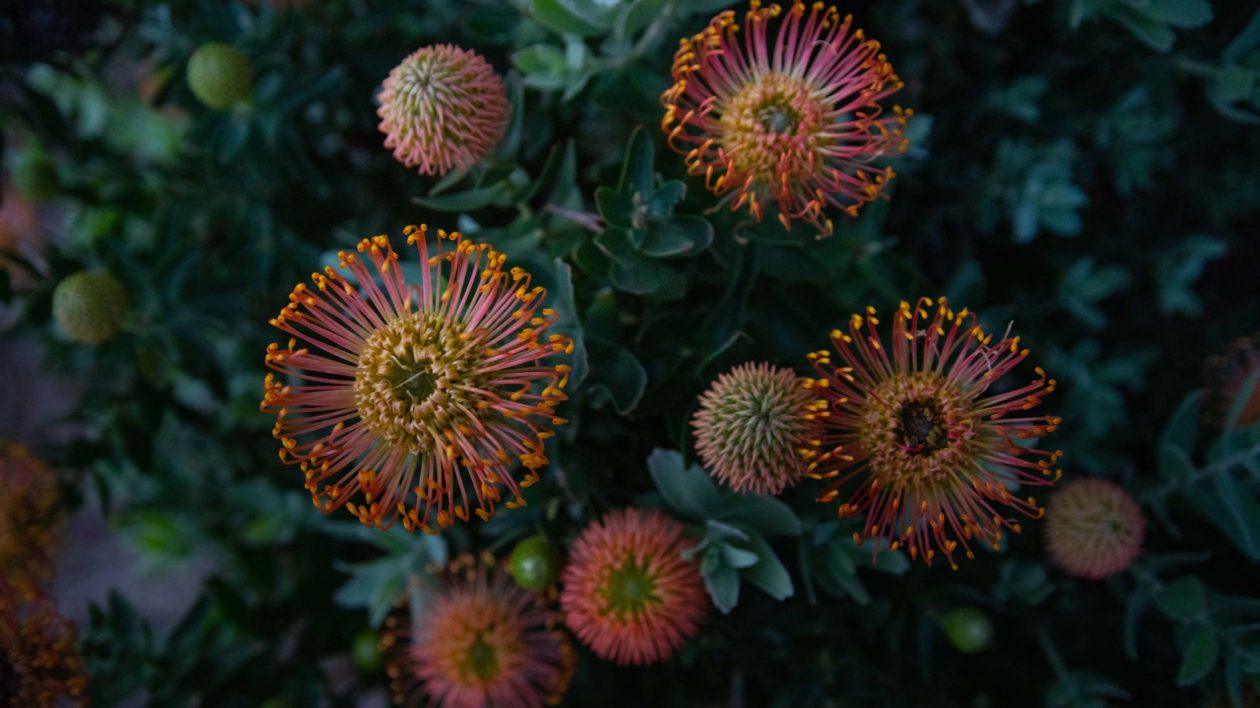
The weather was unpredictable. My first night on the mountain, it dropped to below freezing. The warmest place was the kitchen tent, so we all gathered in to commiserate. Misery over the cold united us. Zuko and Afro were quickly named the jokesters of the group. Nelly was nurturing and Ayabonga had the loudest laugh. We talked about African politics, cricket and music. Zuko asked me to play a Bollywood song, but the cold was draining my phone battery so I refused.
You’d assume that was the moment we bonded, but it wasn’t. It was at lunch in the kitchen tent the next day when I found myself unexpectedly emotional while talking about my father’s fight with cancer. I had to swiftly step outside the tent. Standing under the warmth of the sun, I wondered how my vulnerability would be interpreted by the team. Would my tears be seen as a weakness on a shoot where I had to prove my physical fitness as I shadowed the team up the mountain range with all my photography gear on my back? After a few minutes Zuko came outside: “Are you ok? Come get some food.” So I did.
There was a shift, a non-visible one. On our hikes to the invasive pine sites, the conversations got personal. I listened as team members opened up about their families. I noticed that in my presence everyone automatically switched from their native Xhosa to English even if they struggled with the language. Luzuko would start his sentences with “ahhh my English is very bad, very bad.” I had come as an outsider to this group of people but I no longer felt it.
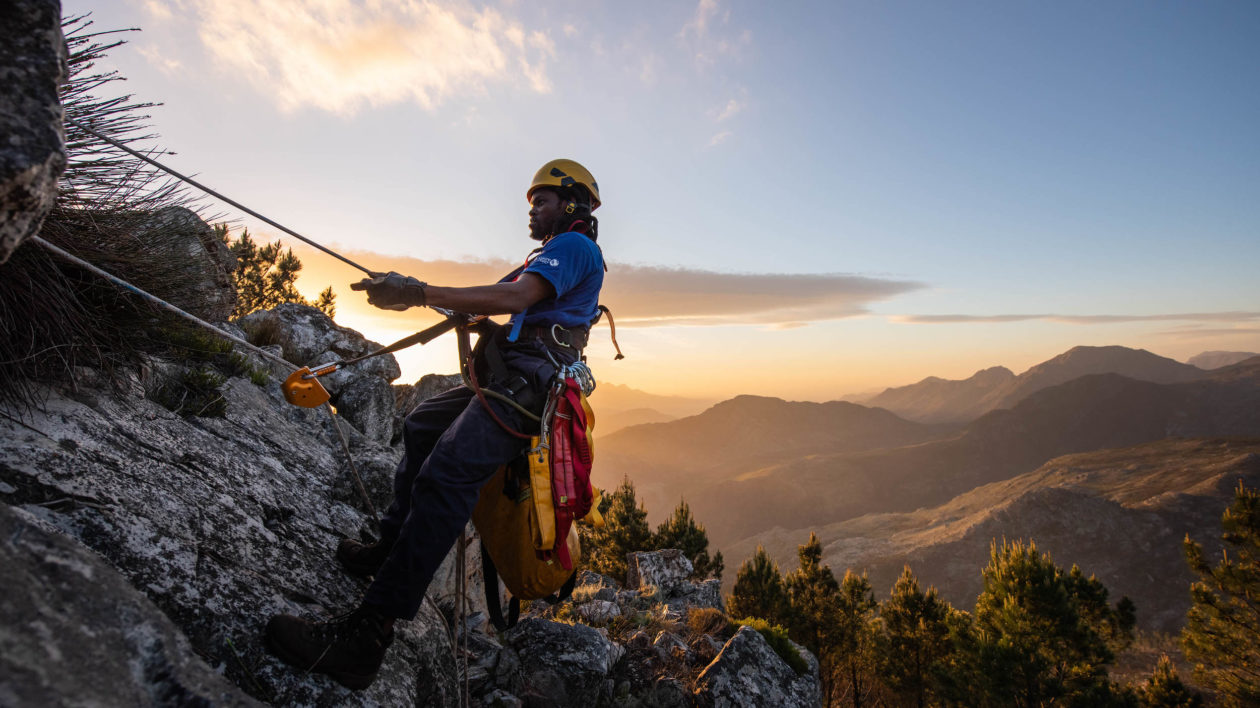
The days on the mountain were long and physically strenuous. With safety helmets on, the team would carry their abseiling gear, which included 100 metres of excess rope, from the campsite to the invasive pine removal site. The weight of my camera gear paled in comparison. Since I am not a trained abseiler, I could not follow the team as they descended the cliff face. The ropes coiled around their bodies, on the lookout for the invasive pines. I would have to think of creative ways to capture the intensity of their work. I had Zuko abseil down with a GoPro on his head for footage for the video. I decided to position myself on the edge of the cliff by the trees onto which the team members anchored their rope. That way I could capture them rappelling down. My helmet secured, camera bag stored safely to the side and my Nikon D850 around my neck, I spent the next few hours trekking up and down the mountain edge, sometimes on all fours to capture different perspectives; following the movements of Zuko, Nelly, Luzuko and Alongile.
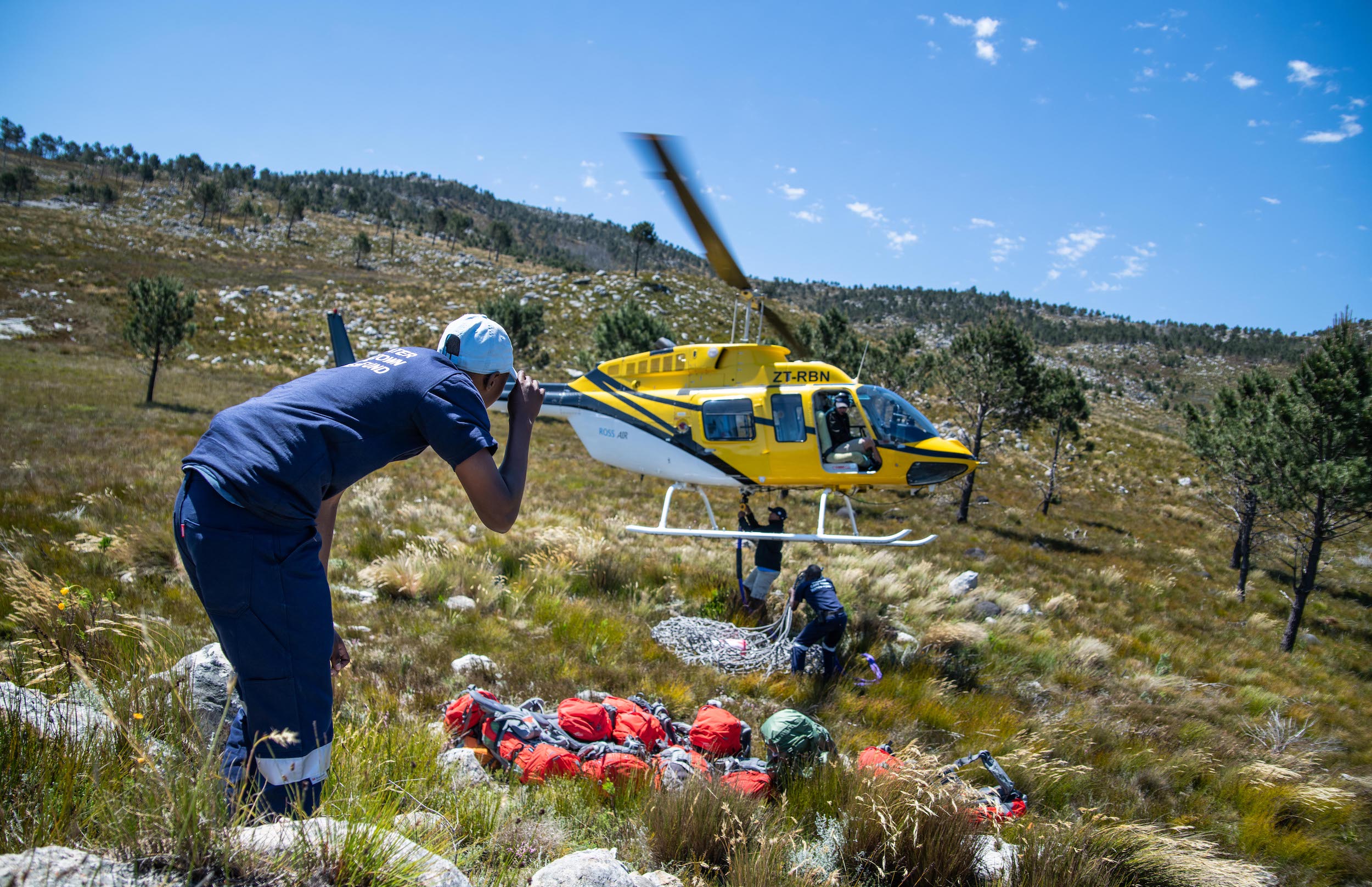
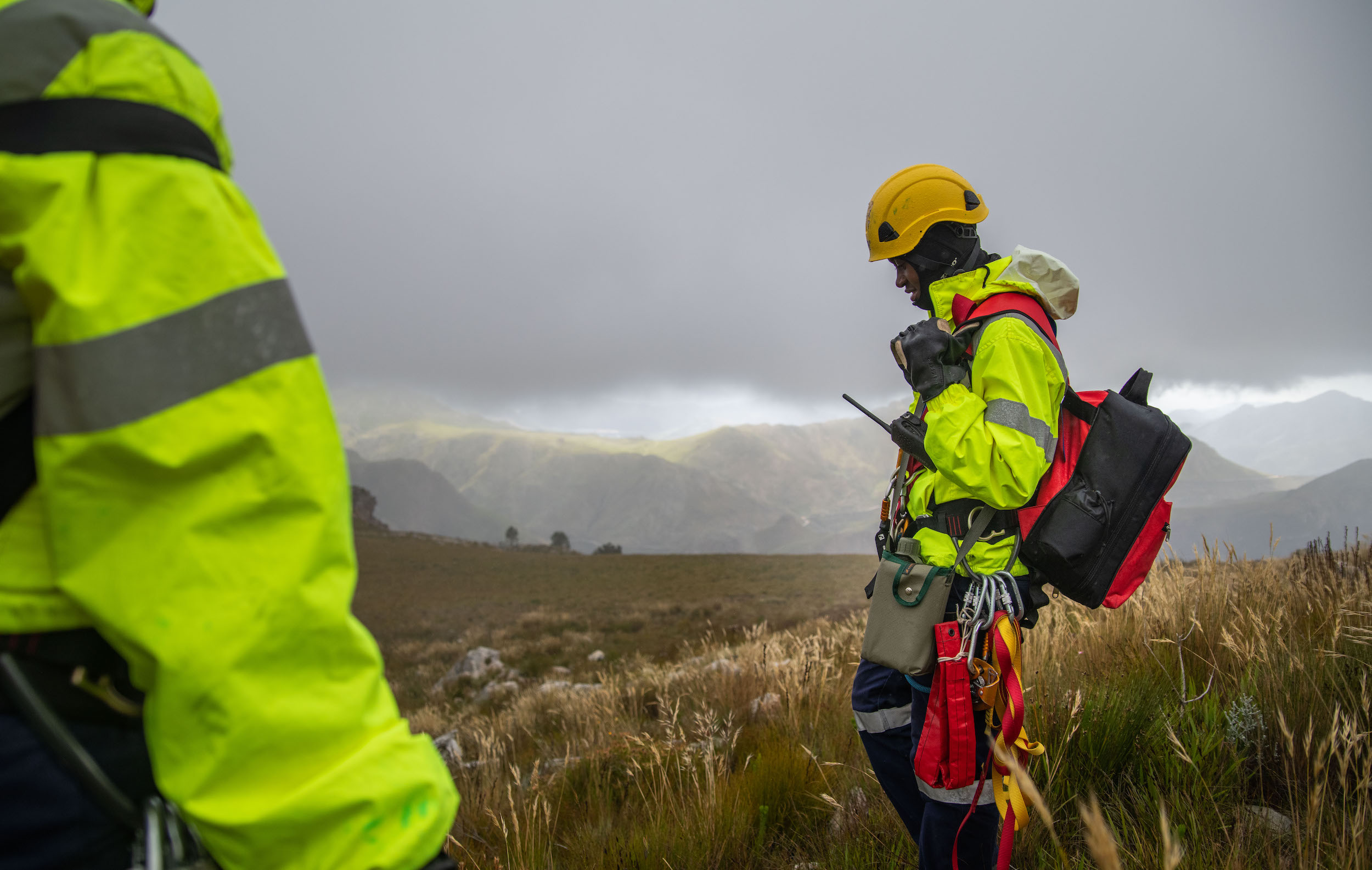
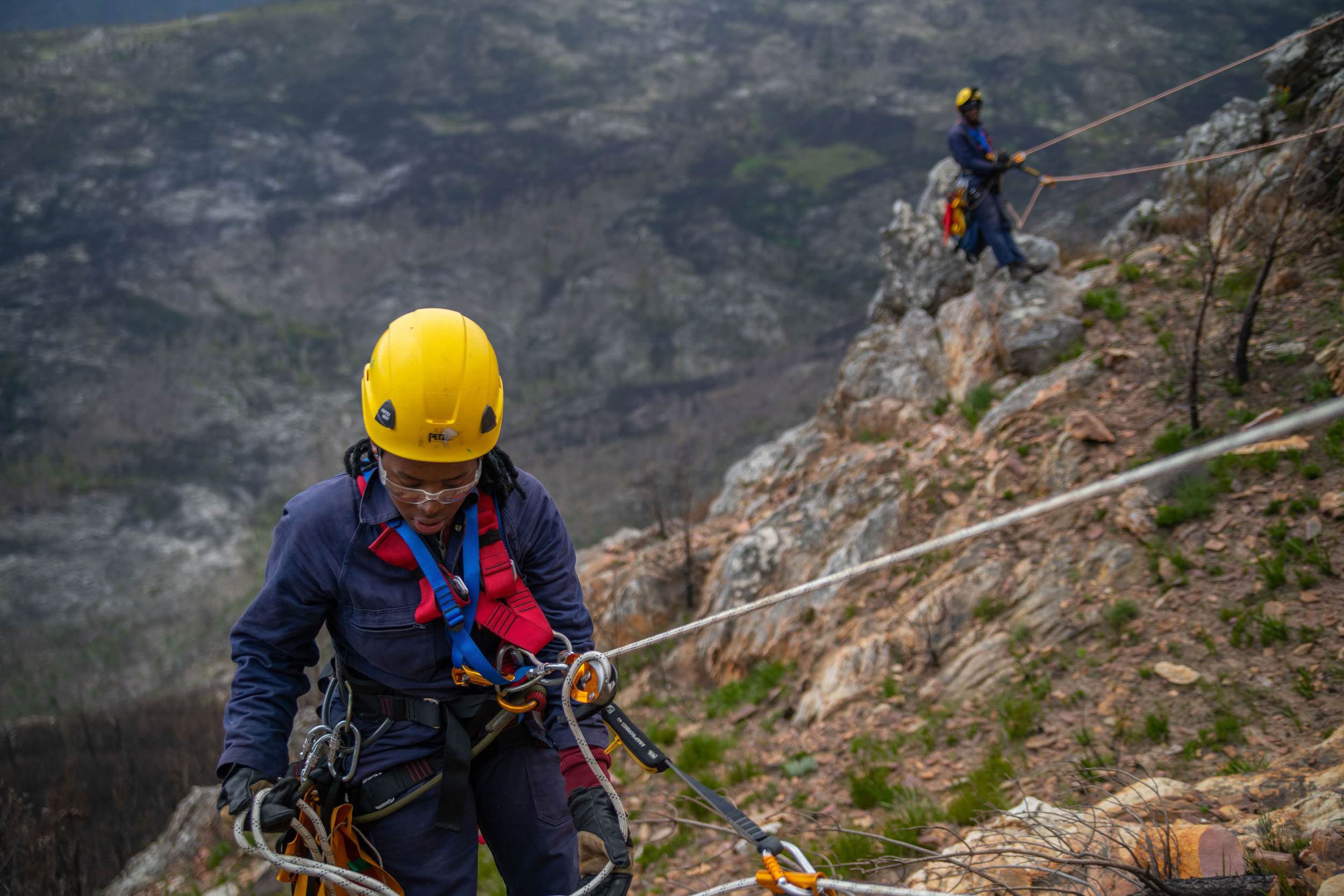
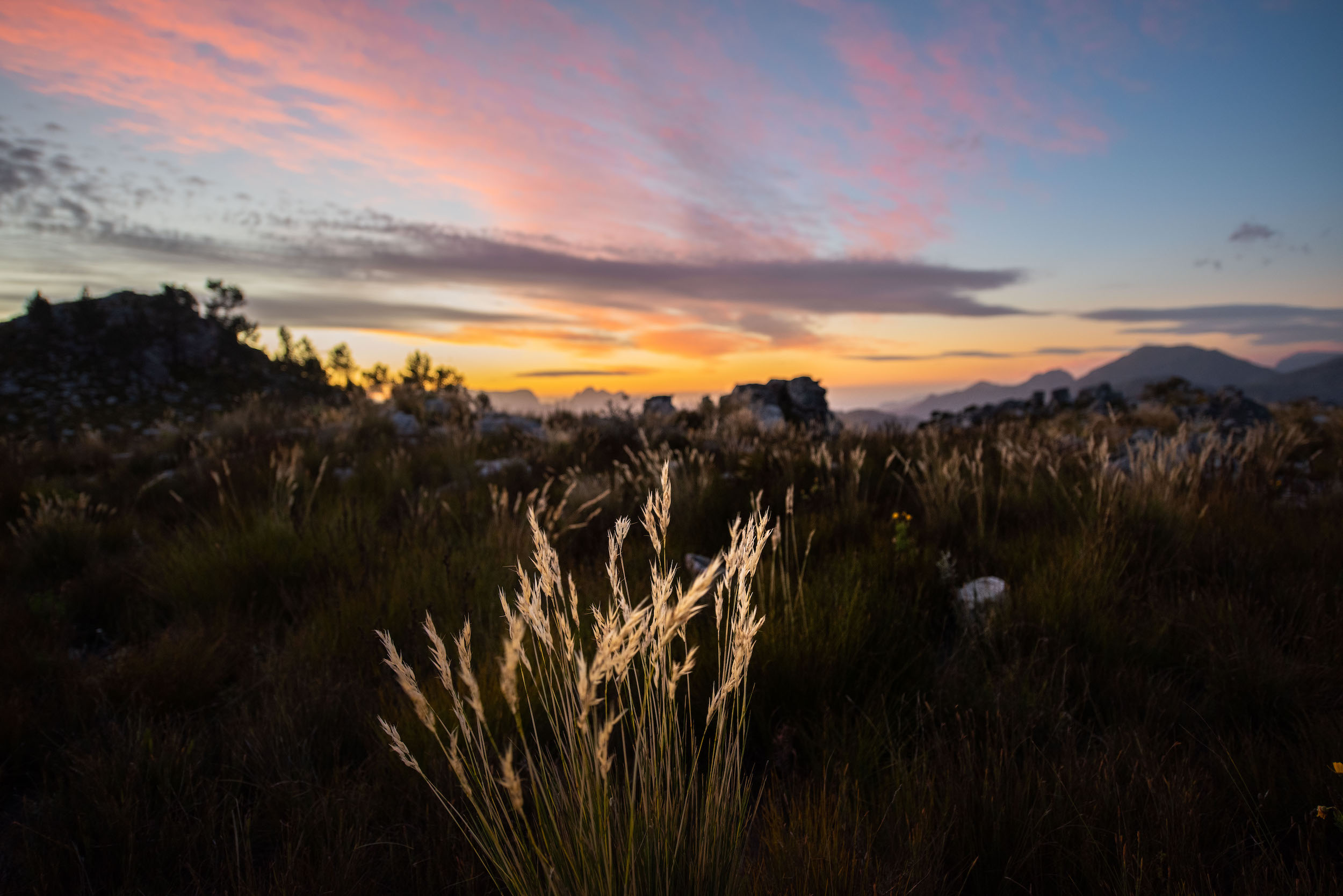
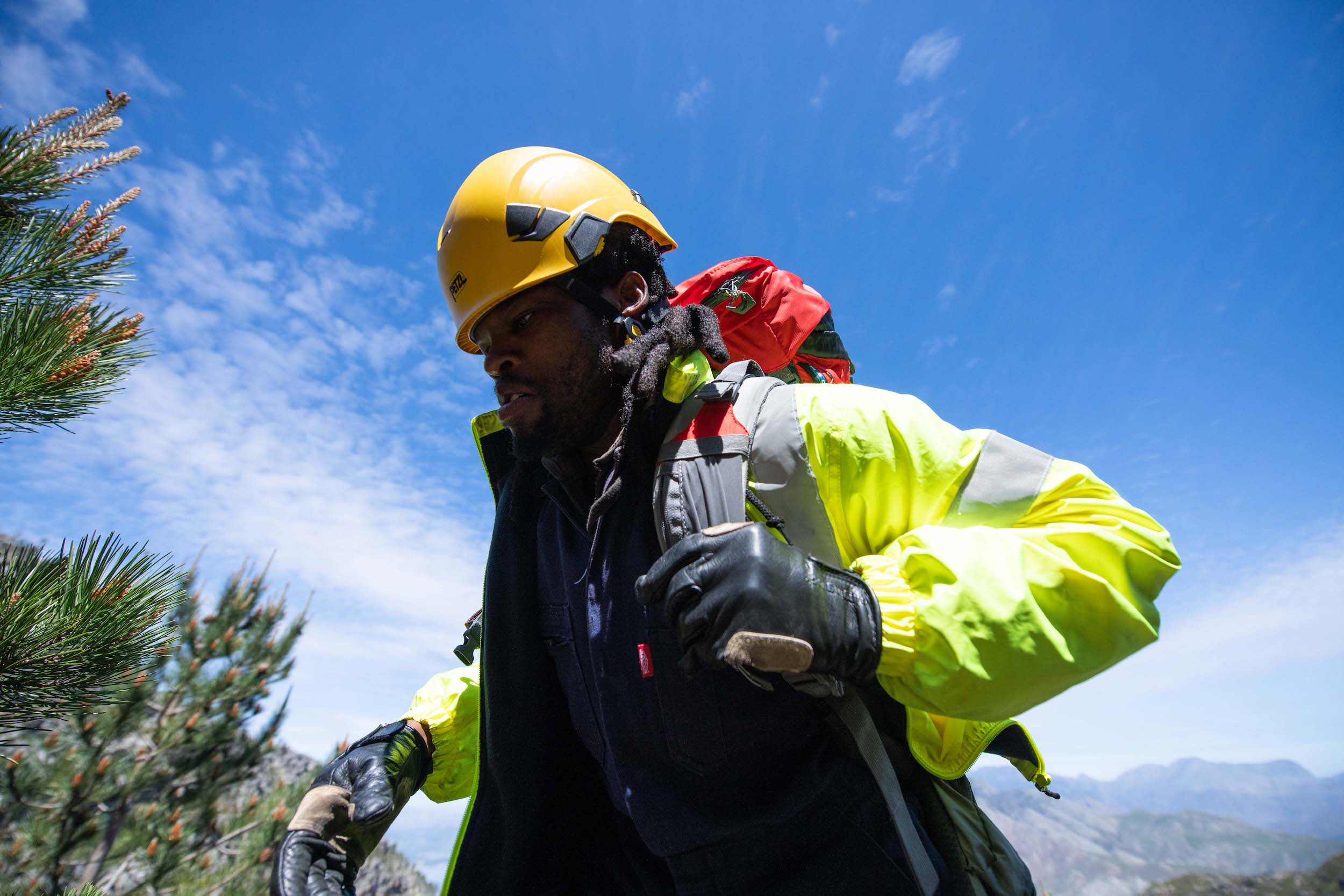
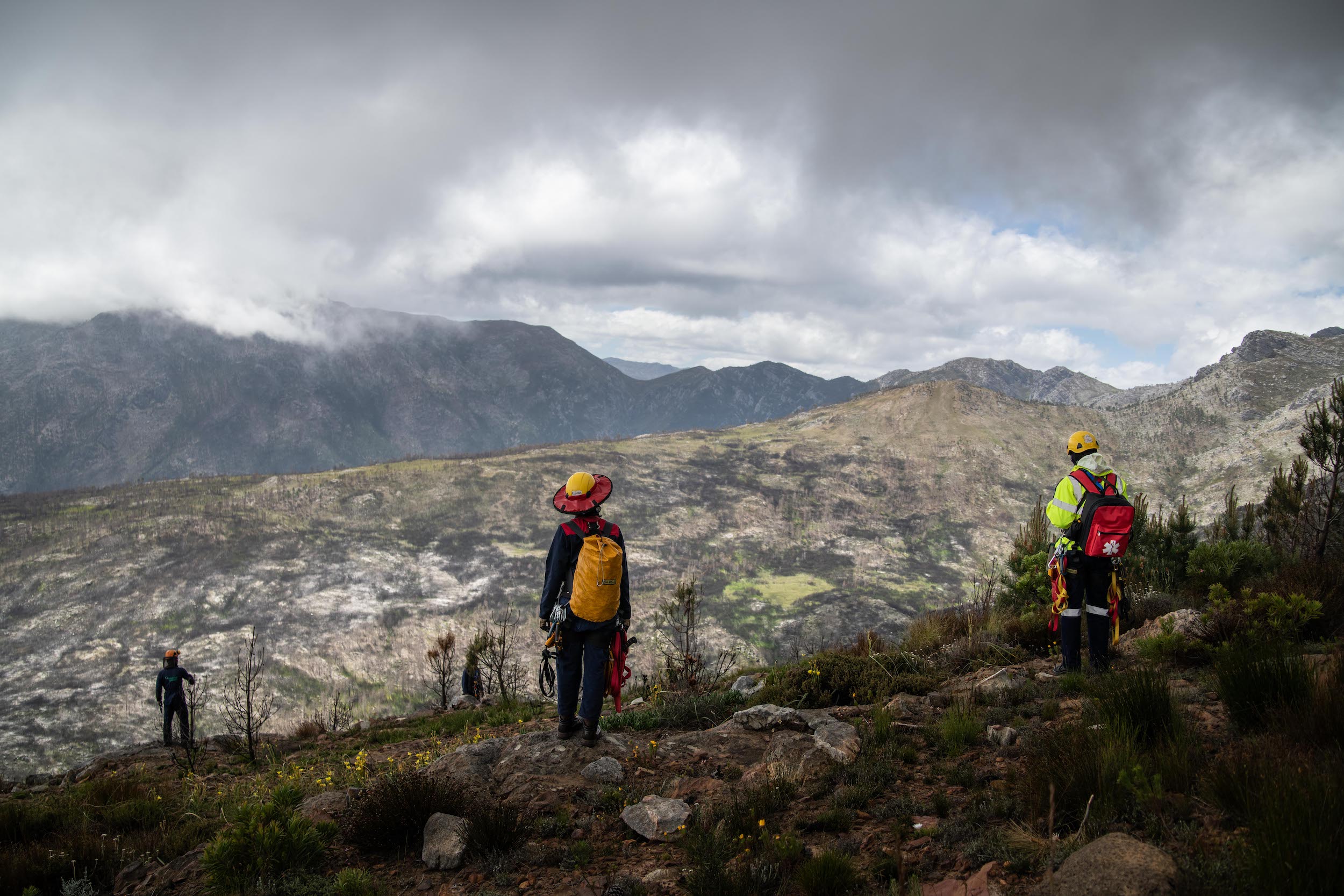
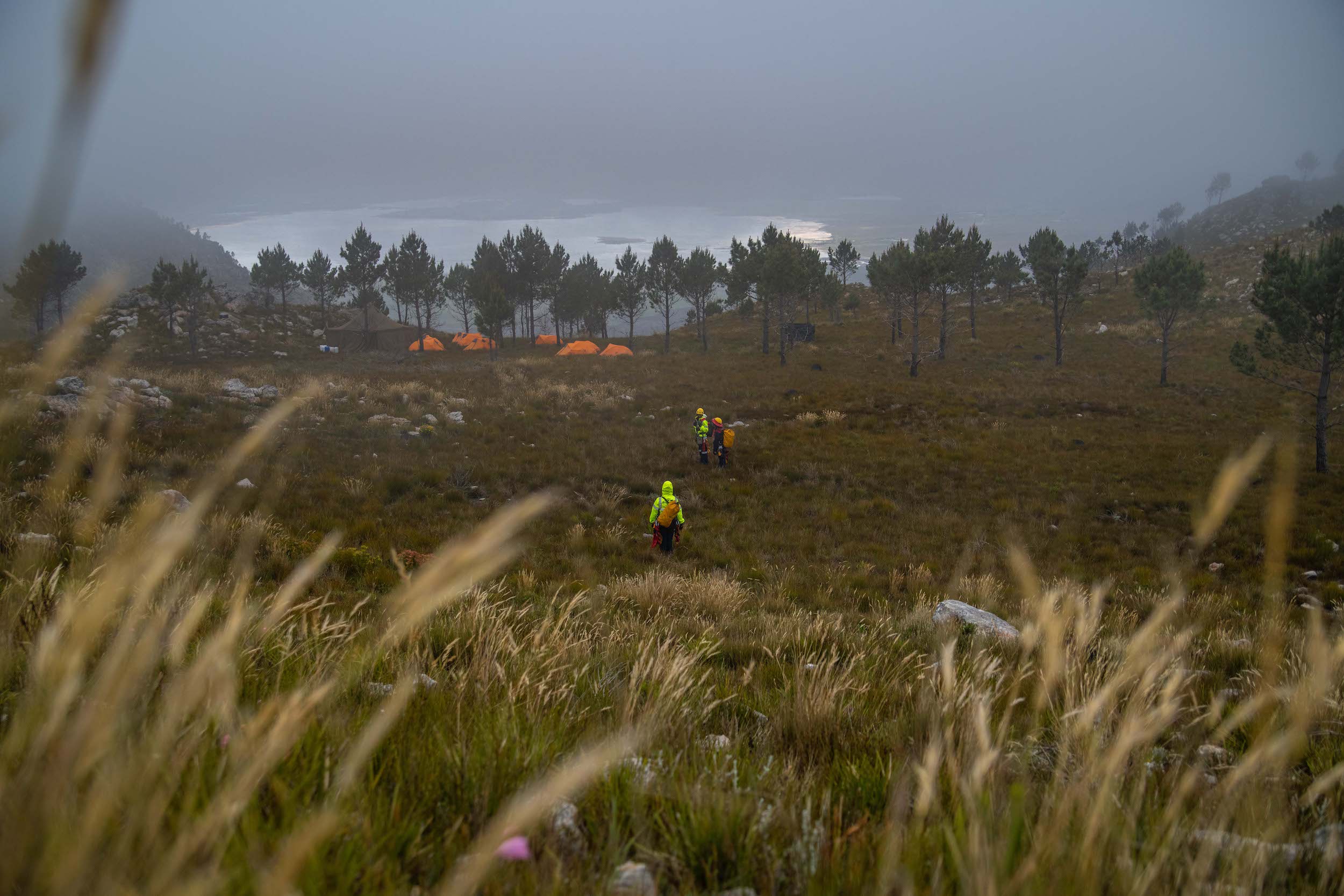
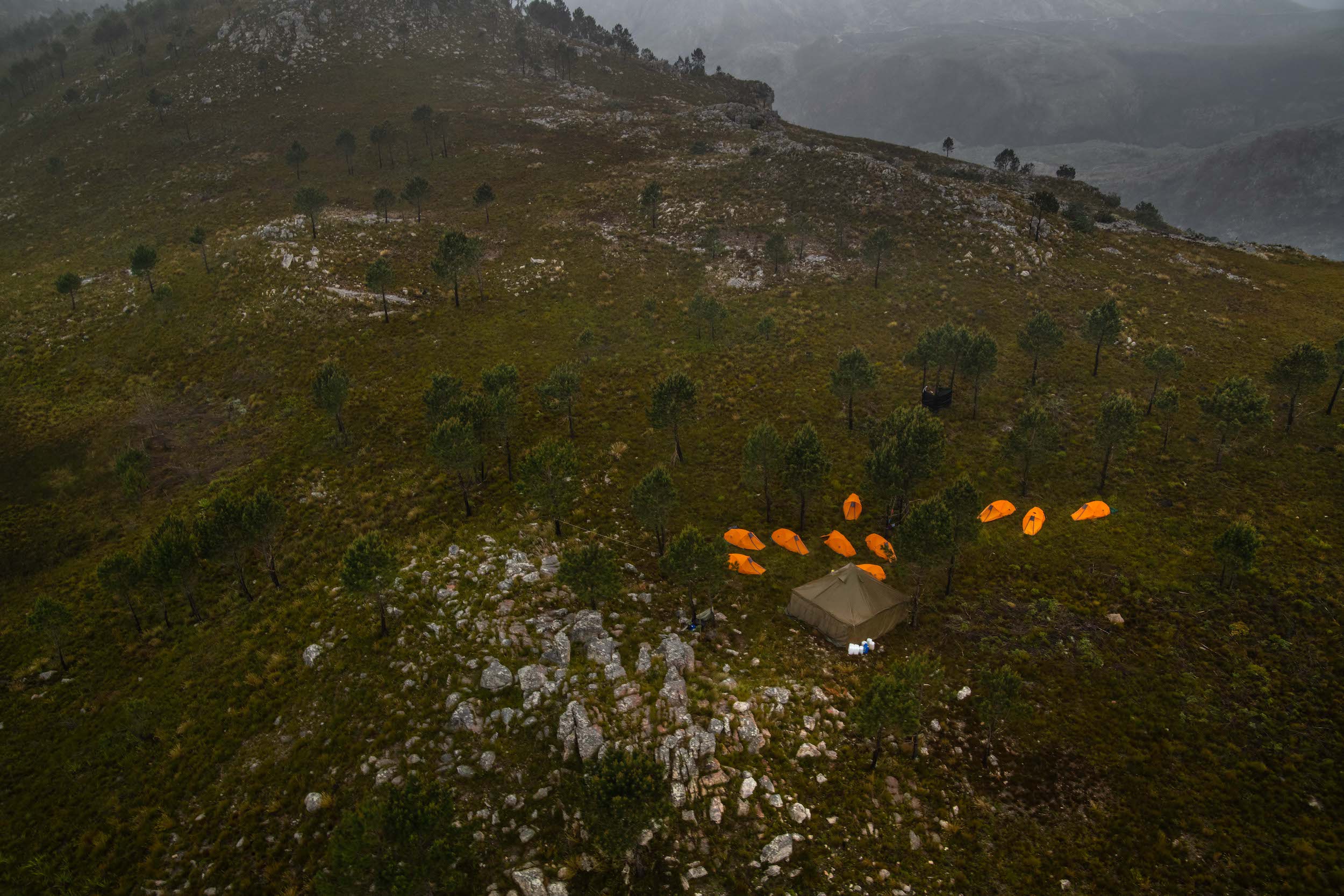
It was before 6:30 AM on day 3 when we heard the unmistakable hovering of the helicopter in the distance. Most of us were still in our tents (it was cold, wet and gloomy outside) as the chopper landed nearby. I stuck my head outside just in time to see Ivan Groenhof jump out yelling “we gotta pack up folks. We are taking you down the mountain this morning!” An executive decision had been made to evacuate the team following news of a severe storm coming through.
Food secured in airtight bins: Check. Kitchen tent dismantled and personal tents packed: Check. Gear secured under a wide-reaching tarp held by large rocks: Check. Within 1.5 hours, the expedition had come to an abrupt halt.
A few weeks later, sitting by my computer with the luxury of a latte in Pune, India, I received a message on WhatsApp from Zuko. It was of two king proteas that had blossomed by the campsite. I knew exactly where this image had been taken. It read: “We were here for two weeks straight. We miss you.”
The team had returned. Their work is conserving native vegetation like the king proteas and is already releasing 1.3 billion gallons of water into the Greater Cape Town region every year.
Sitting there at the computer with Zuko’s image, I blasted a Bollywood song that I knew the team would have loved. I was grateful to have been part of the team, if only for a few days.
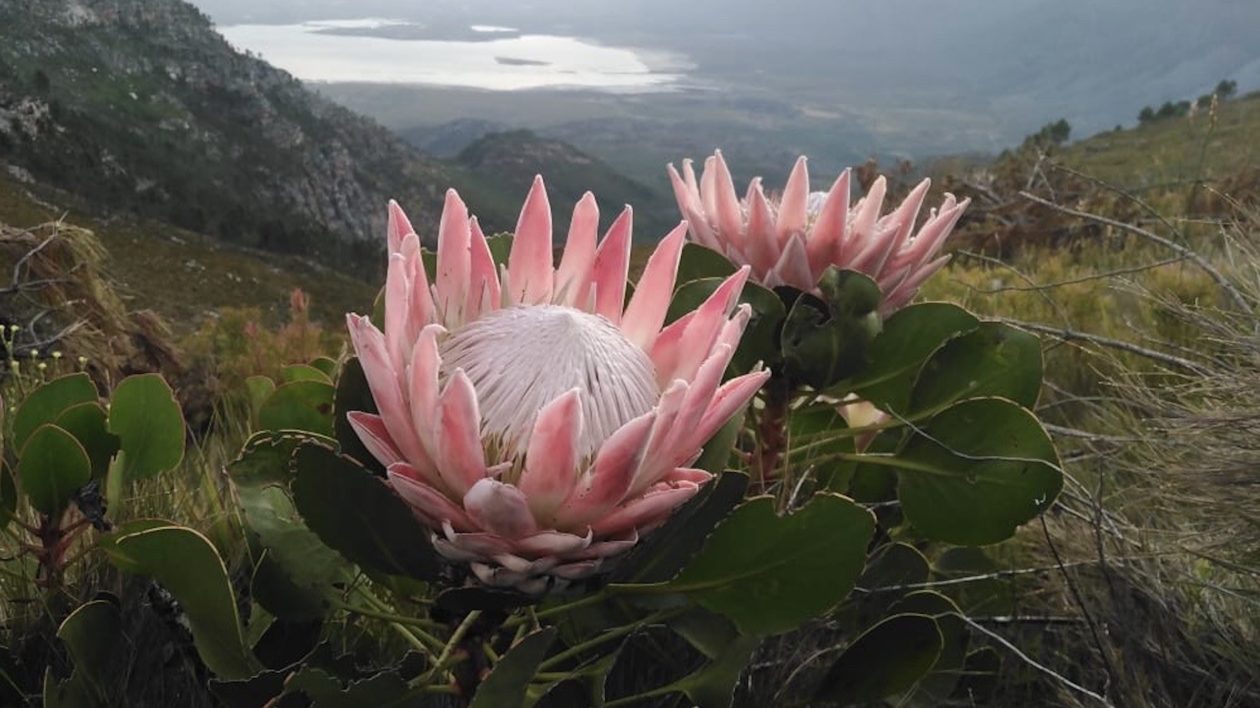



Admire Such brave men.King Protea-well what can we can say -“All Things Bright And Beautiful”